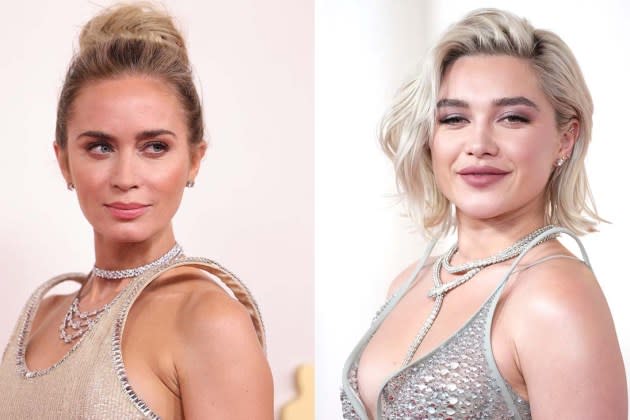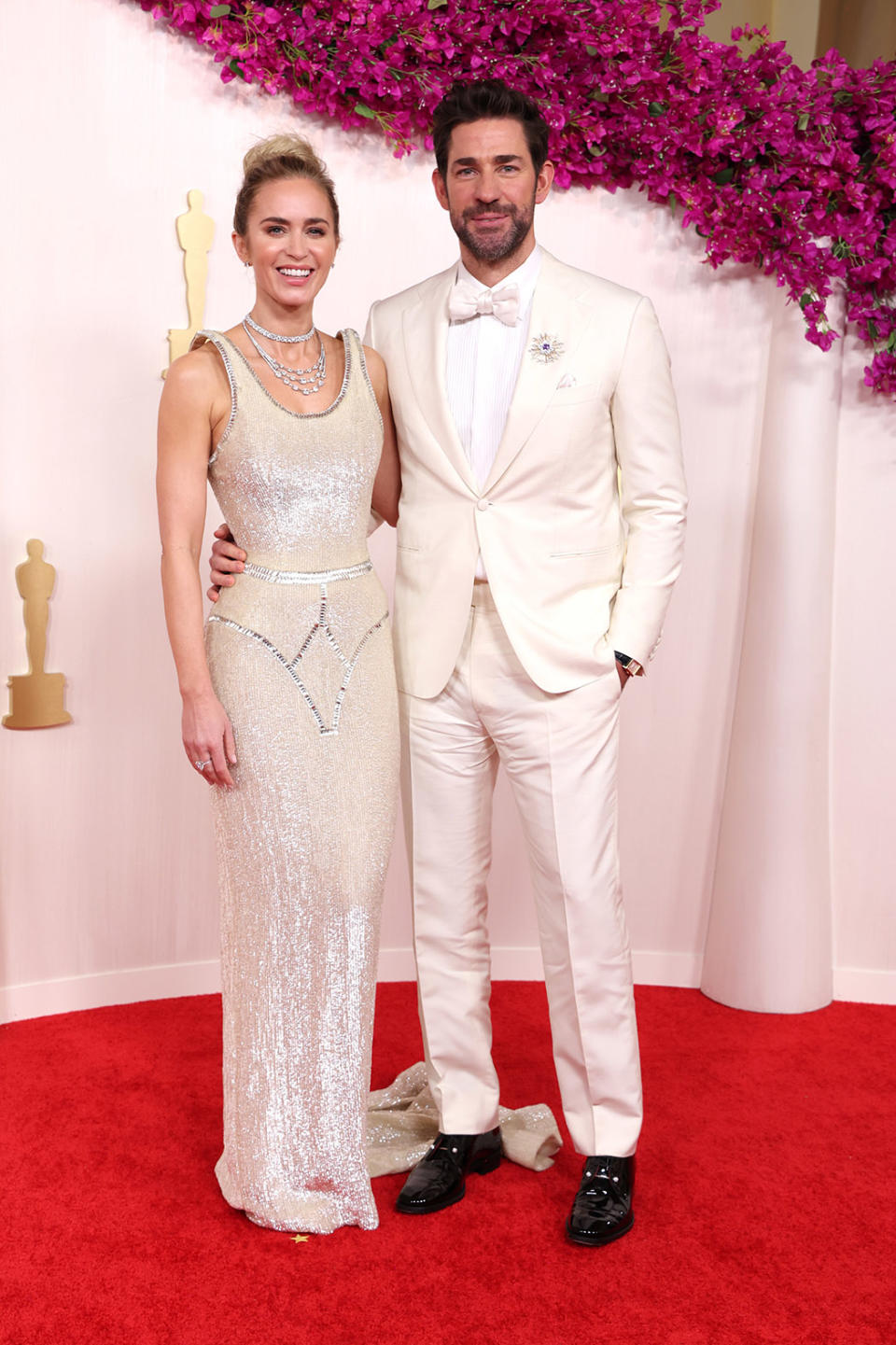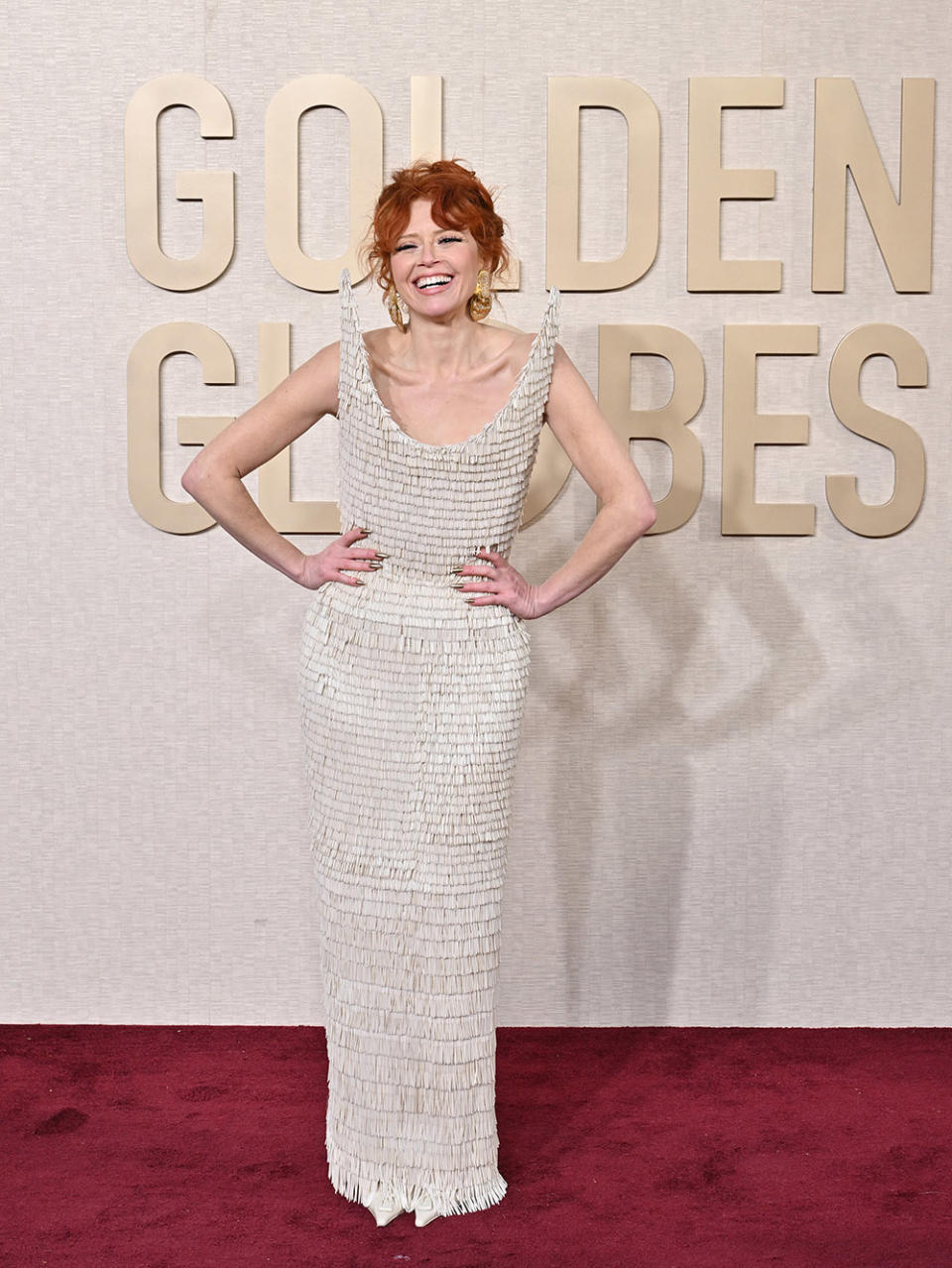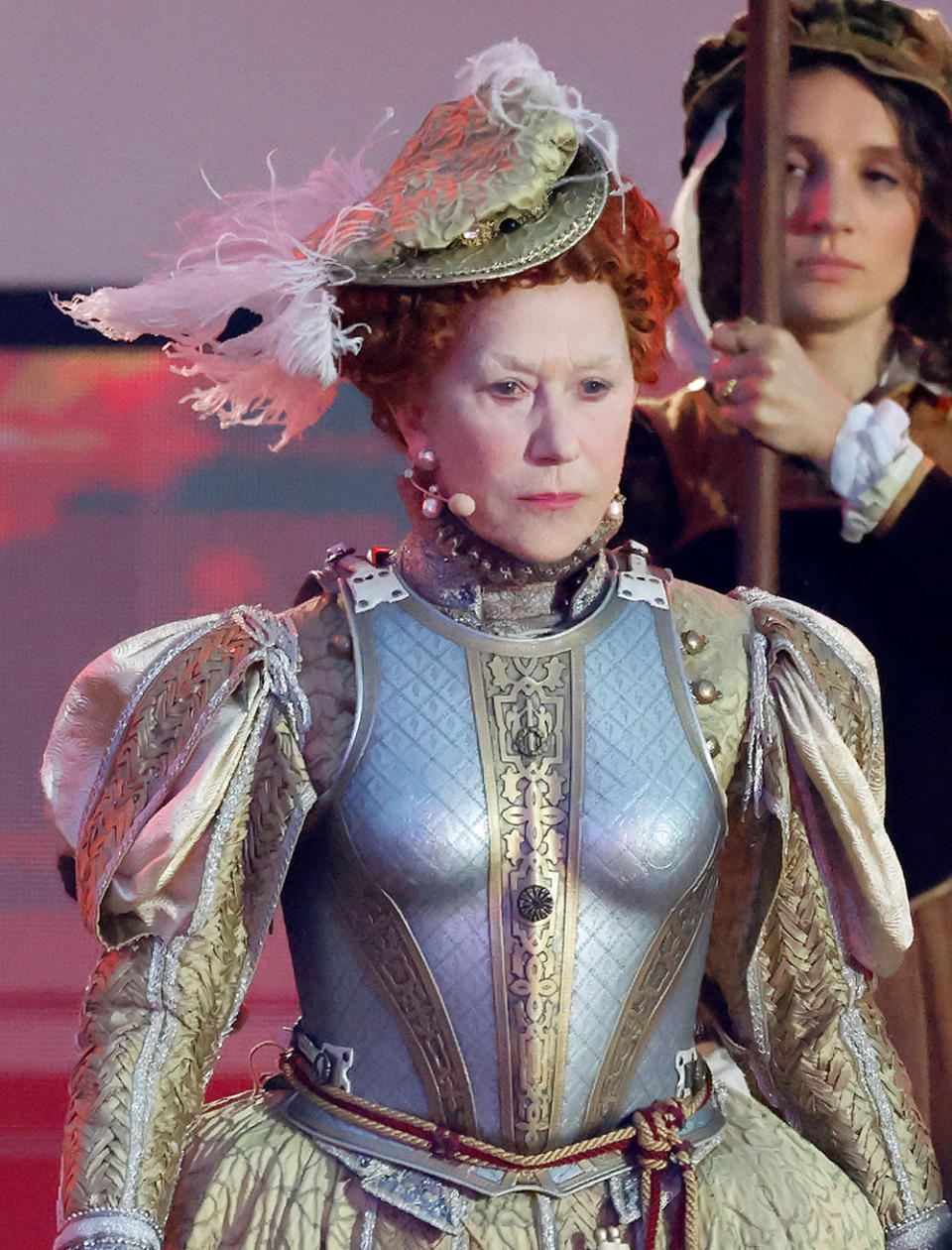Critic’s Notebook: Don’t Side-Eye Emily Blunt and Florence Pugh’s Oscars Shoulder Straps

Within 60 seconds of seeing Emily Blunt arrive on the Oscars 2024 red carpet, I thought: Those shoulder straps are going to be a problem.
Not for Blunt, of course, a best supporting actress nominee for Oppenheimer, who looked lovely in a nude beaded gown designed by Daniel Roseberry for the Spring Summer 2024 haute couture collection for Schiaparelli, the house founded by Elsa Schiaparelli in 1927 and which has been overseen by Roseberry as artistic director since 2019.
More from The Hollywood Reporter
But it was only a matter of time before social media would erupt with cries of confusion and frustration over the detail. After all, when we live in a world in which an indicted former U.S. President criticizes the host of the 96th Academy Awards in real time, it’s likely open season on one woman’s gown, yes?
Sure enough, the snark and chiding soon began, ranging from expressions of mild distraction that the shoulder straps of Blunt’s beaded gown pointedly sat a couple inches above her shoulders to outright indignation that a woman of her stature couldn’t secure a gown that fit properly.
When Florence Pugh arrived in a Del Core gown featuring a similar detail, the online head-scratchers amped up the volume of judgmental remarks. Pugh’s look, by Milan-based designer Daniel Del Core, offered a similar shoulder detail, but its overall vibe was decidedly more ethereal and evoked thoughts of Iris van Herpen, the Dutch fashion designer widely praised for her sculptural designs. Beef’s Ali Wong wore a van Herpen gown to February’s SAG Awards and was widely praised, while her stylist, Tara Swennen, called her “fearless.”
Of course, as long as fashion collections have debuted on runways, style pundits have offered up a phrase — “Well, they just didn’t understand it” — when a design or a whole collection is met with criticism that feels especially sarcastic or snide. Sometimes that’s true, and sometimes that’s merely an excuse.

With that in mind, let’s dive into this particular shoulder detail seen at Oscars 2024 and its origins, concentrating on Blunt’s dress, which seemed to have drawn most of the online ire, because a wealth of compelling history can be discovered within those thin, beaded straps.
First, a fun fact: In 2015’s Oscar-nominated film The Martian, a key plot point centers on a Mars crater named for Italian astronomer Giovanni Schiaparelli. In 1877, he discovered a series of immense channels on the red planet, at the time misinterpreted as canals, which birthed an unproven theory that the presence of water could mean there was life on the red planet. That possibility also led to Giovanni coming up with a word we use to this day: “martian.” The crater ultimately was named to honor his contributions. His niece was none other than fashion designer Elsa Schiaparelli.
That sidestep into planetary and family history is notable because Roseberry employed it as an inspiration for Blunt’s gown in a collection he christened “Schiaparalien.” Elsa Schiaparelli was known for embracing surrealism and avant-garde elements in her designs, as well as motifs that highlighted her love of astronomy and astrology; her famed 1938 Zodiac collection included a stunning cape embroidered with celestial objects.
Using Elsa’s passion for space as a jumping-off point, Roseberry created a collection for Spring Summer 2024 that’s rooted in juxtapositions, offering designs that often put an emphasis on exaggerated shoulder details. Even a cursory view of the 32 looks would lead anyone to conclude that the shoulder straps on Blunt’s “tank dress,” as it’s called in the show notes, are subtle compared to other designs that push the boundaries of both the theme and attitude.
Another example of Roseberry pushing the envelope in silhouettes: At January’s Golden Globe Awards, Natasha Lyonne wore a Schiaparelli gown from the Spring Summer 2023 haute couture collection that featured two dramatic peaks rising up from the neckline. Social media went wild, with fans of fashion and Lyonne roundly dubbing it “an art piece.”

So what’s the difference? Honestly very little. Because while one was decidedly more unconventional than the other, their bodice structures are undeniably similar. The looks are sculptural and designed to both shape and stand away from a woman’s body, from the shoulders to the waist.
Their historical roots likewise can be traced to one type of garment: not the corset, as many might assume, but the piece that ultimately inspired the corset, the breastplate.
This key piece of armor has been employed for centuries; indeed, it’s mentioned in the Bible, in the Book of Ephesians: “Stand therefore, having your loins girt about with truth, and having on the breastplate of righteousness.” A look at the design of breastplates extending back to medieval weaponry shows they were typically sleeveless and often crafted of bronze or iron — in either case, no matter what was worn underneath, its shoulder construction would create a gap that admittedly was covered by other pieces meant to fit over the shoulders and arms. But ultimately, the breastplate wasn’t merely a practical piece of protection, it also evolved into one of the most powerful and pointed symbols of a warrior.

Illustrations and paintings of Joan of Arc, a national heroine of France who led troops to a historic victory in 1429, often depict her wearing a breastplate, with and without its surrounding armor. Fast-forward roughly six centuries, when Helen Mirren wore a breastplate not once but twice, playing the titular monarch in both the 2005 miniseries Elizabeth I and in 2022, when she played the same role for a theatrical production, A Gallop Through History, during Queen Elizabeth II’s Platinum Jubilee Celebration. Cate Blanchett likewise can be seen wearing some positively chic armor as the queen in a warrior moment in 2007’s Elizabeth: The Golden Age.
All of which is to say, the structured torso of Blunt’s gown — and, to a lesser degree, the bodice of Pugh’s look as well — enjoys a bounty of inspiration and history, a blend of forward-thinking artistry and exceptional handcraft, woven through an incredibly rich foundation of what could be deemed the origins of female empowerment. That two-inch gap between a shoulder strap and skin is easy fodder for snark, but it’s also proof that Blunt stands out as a style warrior.
Best of The Hollywood Reporter